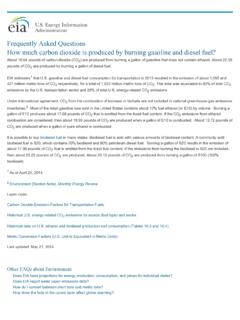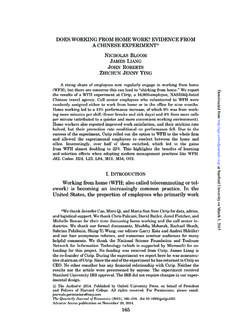Transcription of G. SOCIAL WELFARE: WHAT DOES IT MEAN? HOW MUCH …
1 _____ G. SOCIAL WELFARE: WHAT does IT MEAN? how much PRIVATE BENEFIT IS PERMISSIBLE? WHAT IS A COMMUNITY? 1. Introduction IRC 501(c)(4) provides, in part, for the exemption from federal income taxation of civic leagues or organizations not organized for profit but operated exclusively for the promotion of SOCIAL Section (c)(4)-1(a)(2)(i) of the Income Tax Regulations states that an organization will be considered to be operated exclusively for SOCIAL welfare purposes if it is primarily engaged in promoting in some way the common good and general welfare of the people of the community, primarily for the purpose of bringing about civic betterments and SOCIAL improvements.
2 An organization is not operated exclusively for the promotion of SOCIAL welfare within the meaning of section 501(c)(4) if its primary activity is carrying on a business with the general public in a manner similar to organizations that are operated for profit. Treas. Reg. Section (c)(4)-1(a)(2)(ii). Organizations or civic leagues not organized for profit but operated exclusively for the promotion of SOCIAL welfare were first exempted from federal income tax by the Revenue Act of 1913. The Committee Reports are deficient in offering any reasoning behind the inclusion of this particular exemption.
3 There is no official Congressional or Service pronouncement construing the terms "civic league" or " SOCIAL welfare" as embodied in section 501(c)(4). However, In United States v. Pickwick Electric Membership Corp., 158 F. 2d 272 (6 Cir. 1946), the Court stated that a civic organization is described as embodying "the ideas of citizens of a community cooperating to promote the common good and general welfare of the community." In v. Lake Forest, Inc., 305 F. 2d 814 (4 Cir. 1962), the court described a civic organization as being "a movement of citizenry or the community," whereas the court in Erie Endowment v.
4 United States, 316 F. 2d 151 (1963), while acknowledging the difficult task in arriving at a specific definition of "civic organization," stated that "the organization must be a community movement designed to accomplish community ends." 1 IRC 501(c)(4) also provides for exemption of local associations of employees. This topic, however, will focus only on the SOCIAL welfare aspects of 501(c)(4). Webster's New World Dictionary defines the term " SOCIAL welfare" as "any service or activity designed to promote the welfare of the community and the individual, as through counseling services, health clinics, recreation halls and playgrounds.
5 " This definition is in alignment with the broad concept of " SOCIAL welfare" as provided in section (c)(4)-(a)(2)(i) of the Income Tax Regulations. Additionally, the court in Commissioner v. Lake Forest, Inc., stated that "In short, ' SOCIAL welfare' is the well-being of persons as a community." The terms "civic organization" and " SOCIAL welfare" appear to be defined by authorities in terms of "community", an equally evasive concept which will be discussed at length later in this article in the context of Homeowners' Associations. Because " SOCIAL welfare" is a vague and elusive term, it has been broadly interpreted by the courts and the Service.
6 Organizations exempt under section 501(c)(4) are generally described in one of the following categories: 1. Nonprofit organizations that traditionally have been labeled in common parlance as SOCIAL welfare organizations; 2. Organizations that may be performing some type of public or community benefit but whose principal feature is lack of any private benefit or profit; 3. Organizations that would qualify for exemption under section 501(c)(3) but for a defect in their organizational instruments or if they were not "action organizations." Therefore, although SOCIAL welfare generally denotes benefits to the community, beyond that there is disagreement as to a working definition of the term.
7 In practice, section 501(c)(4) has been used by both the courts and the Service as a haven for organizations that lack the accepted essential characteristics of a taxable entity, but elude classification under other subparagraphs of 501(c). 2. Overlapping Relationship between Section 501(c)(4) and Other Tax Exempt Sections of the statutory history is lacking, with respect to the origins of section 501(c)(4), and statutory language is scant and couched in seemingly subjective terminology, the regulations' drafters and the courts have lacked clear guidance in _____ this area.
8 The predictable result has been a lack of uniformity in judicial decisions that contributes to more confusion and still more lack of uniformity. As a result, judicial inconsistency becomes both the cause for and effect of confusion under IRC 501(c)(4). The concepts of SOCIAL welfare and community benefits are present, to some extent, in virtually all other subparagraphs of section 501(c), perhaps most notably in (c)(3), (c)(5), (c)(6), (c)(7), (c)(8), (c)(9), (c)(12), (c)(17), and (c)(21). Consequently, the opportunities for confusion under section 501(c)(4) are compounded by the apparent overlap among these provisions.
9 This overlap is less evident or important where the language of the subparagraph is precise, as is the case with 501(c)(17), or where there are few benefits to be gained by preferring one exempting provision over another. For these reasons it is the 501(c)(3)/(c)(4) overlap that is the greatest source of difficulty for the Service. This conflict and a few of the other overlapping subparagraphs of 501(c) are discussed below. a. Section 501(c)(3).The concepts of " SOCIAL welfare" under section 501(c)(4) and "charity" under section 501(c)(3) are not mutually exclusive.
10 Section (c)(4)-1(a)(2) of the regulations states that a SOCIAL welfare organization that meets the definition of "charitable" in section (c)(3)-1(a)(2) and is not an "action" organization can qualify for exemption under section 501(c)(3). Conversely, section (c)(3)-1(c)(3)(v) of the regulations states that an "action" organization may qualify for exemption under section 501(c)(4) where it otherwise qualifies under section 501(c)(3). As a general rule, all organizations exempt under section 501(c)(3) could also qualify under section 501(c)(4), though the reverse is not See Rev.


















